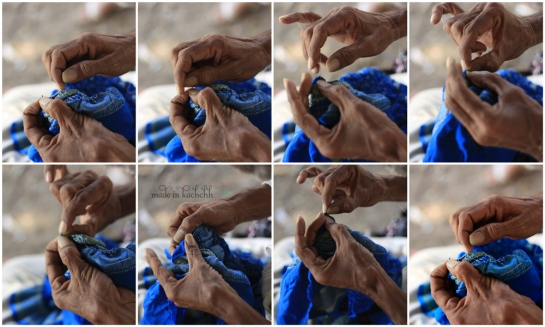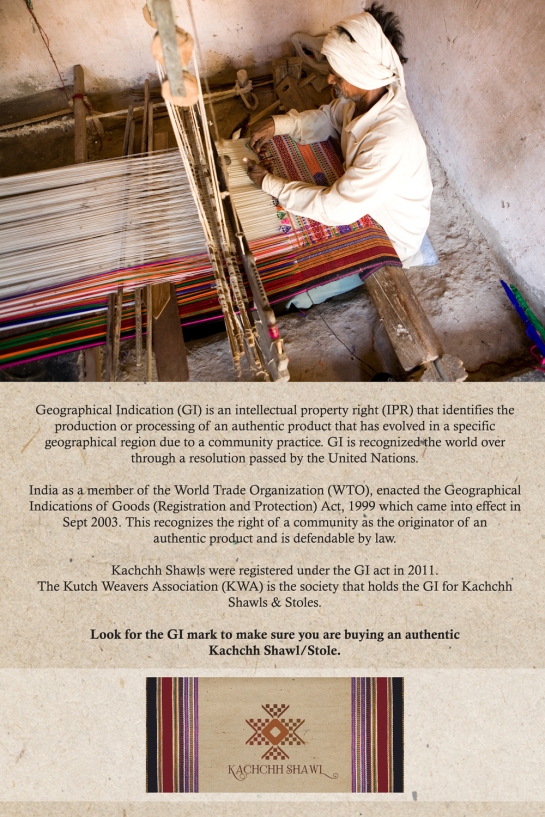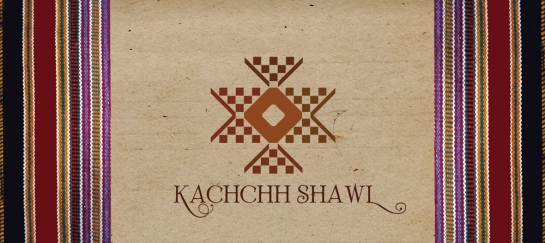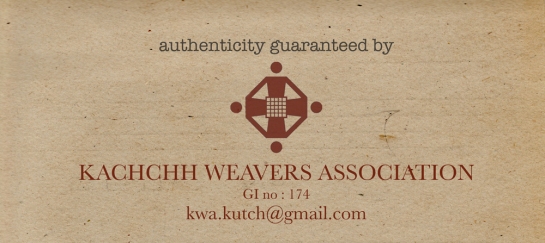A visit to a village of weavers, this sunny sunday morning, made me think a lot and I want to share this experience with you. Bhujodi, a small village about ten kilometers east of Bhuj is inhabited by several craftsmen who specialize in hand-loom weaving. Besides the fact that artisans welcomed us to their homes as if we were family, they shared their knowledge with passion and without a second thought about selling anything to us.
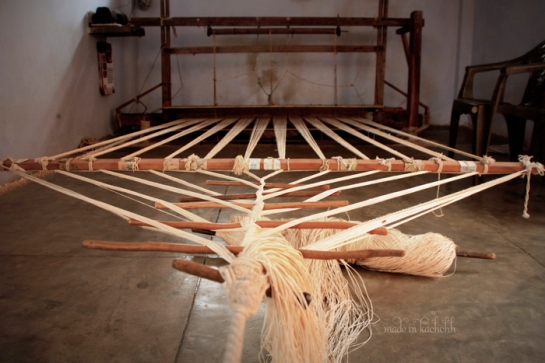 First we meet Narayan-bhai and his son. They specialize in the manufacture of woollen carpets. Today it is a bit special, they are preparing for Diwali, the Indian New Year, so are coating the walls of their home with a mixture of mud, lime and cow-dung.
First we meet Narayan-bhai and his son. They specialize in the manufacture of woollen carpets. Today it is a bit special, they are preparing for Diwali, the Indian New Year, so are coating the walls of their home with a mixture of mud, lime and cow-dung.
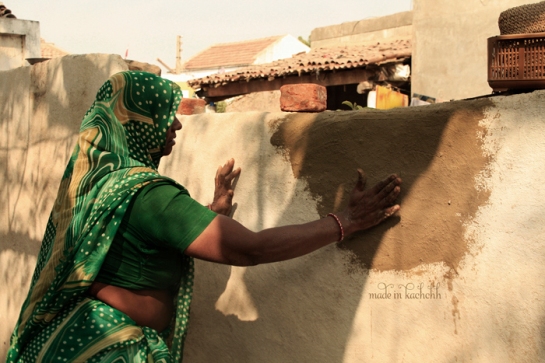
However seeing our excitement to watch the looms work, they settle down at their looms and start weaving a carpet. Although I’ve seen weaving work before, I am fascinated! Beyond the technical moves that are impressive, the complexity and beauty of the machine leaves me speechless. All these lines, these regular movements, these colors … create an atmosphere that is truly mesmerizing!
They have 2 looms, fully manual. The one that Naryanbhai uses
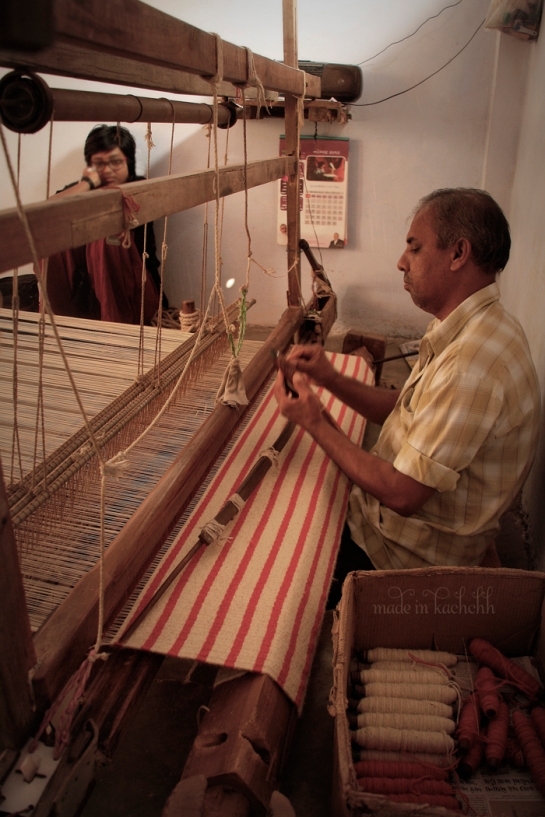 and the other handled by his son:
and the other handled by his son:
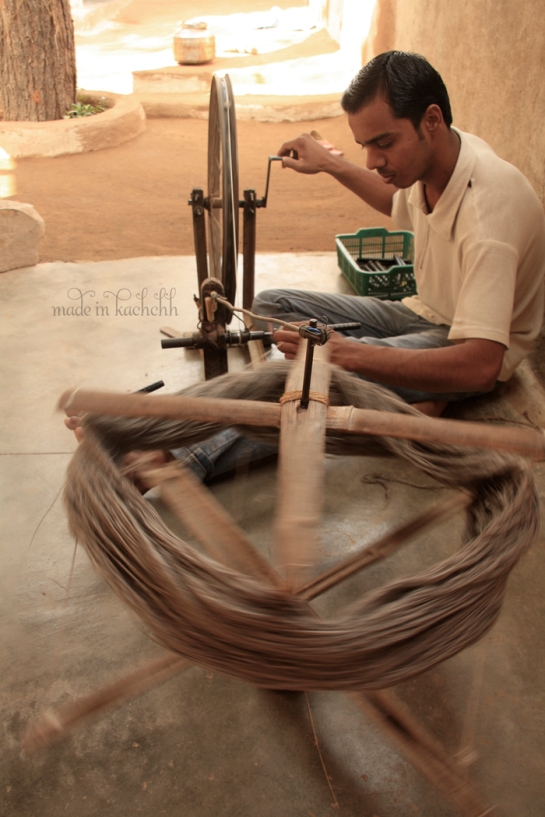 My wife and I sit there for a long time just watching them work. Most of their production is for a client from Finland! They take about 1 day to make 1 carpet.
My wife and I sit there for a long time just watching them work. Most of their production is for a client from Finland! They take about 1 day to make 1 carpet.
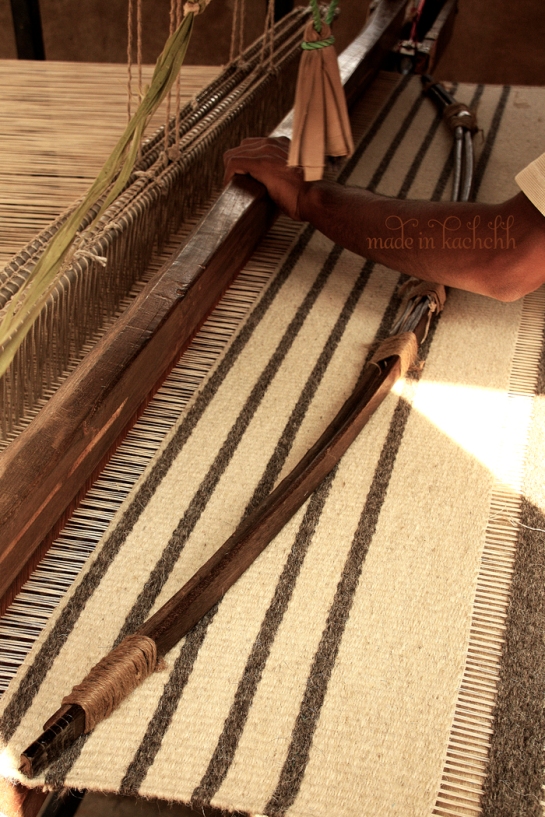 They are proud to show that they have designed a carpet with three different types of wool: camel, black sheep and white sheep.
They are proud to show that they have designed a carpet with three different types of wool: camel, black sheep and white sheep.
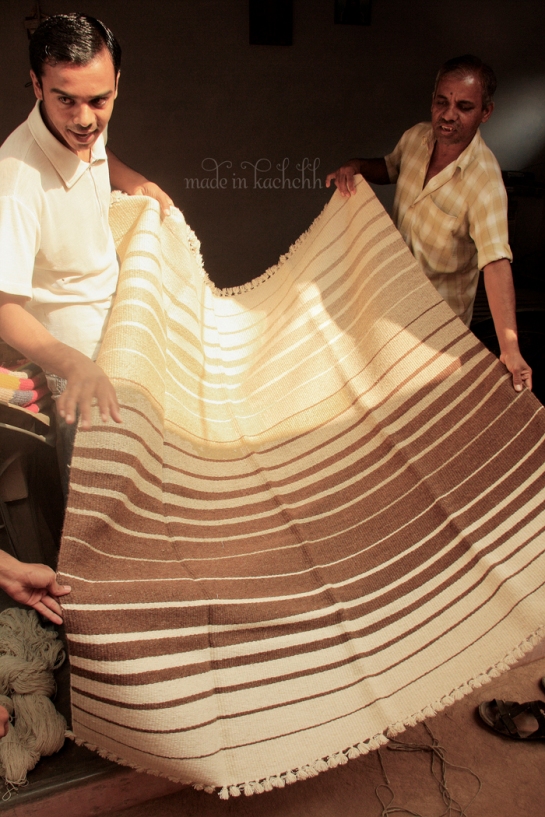 They say they love the creative side of their craft, but do not have enough time to truly experiment since they need to produce carpets for the Finnish which are large orders and are always the same : gray and white…”european tastes!” they say.
They say they love the creative side of their craft, but do not have enough time to truly experiment since they need to produce carpets for the Finnish which are large orders and are always the same : gray and white…”european tastes!” they say.
And then there is Purushothambhai. If you can read the name correctly the first time you win a silk shawl 🙂 We had not even planned to visit his home, he catches us on the streets and says “come and see, I have something to show you.”
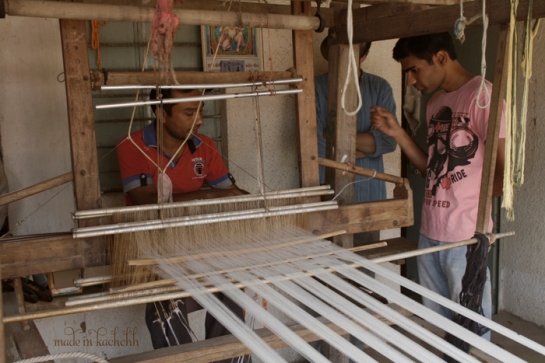 He begins by showing us a series of very finely woven shawls with a mixture of silk and cotton, then take us to his loom. It is much narrower than Naryanbhai because it is used to make scarves and shawls but it is equally impressive.
He begins by showing us a series of very finely woven shawls with a mixture of silk and cotton, then take us to his loom. It is much narrower than Naryanbhai because it is used to make scarves and shawls but it is equally impressive.
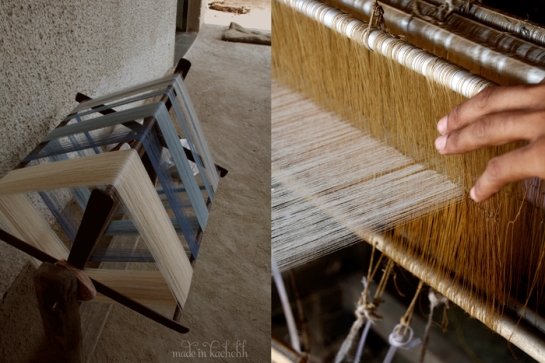 The thread is much thinner, and the weaving takes longer. Depending on the type of pattern, a piece can take up to 1 month. The method for doing this kind of pattern is inexplicable in writing, it has been a good half an hour to figure out how he is doing it! Purushothambhai is first and foremost an artist, he creates his own designs, his own forms … He sells his works everywhere in India, at exhibitions and events related to crafts.
The thread is much thinner, and the weaving takes longer. Depending on the type of pattern, a piece can take up to 1 month. The method for doing this kind of pattern is inexplicable in writing, it has been a good half an hour to figure out how he is doing it! Purushothambhai is first and foremost an artist, he creates his own designs, his own forms … He sells his works everywhere in India, at exhibitions and events related to crafts.
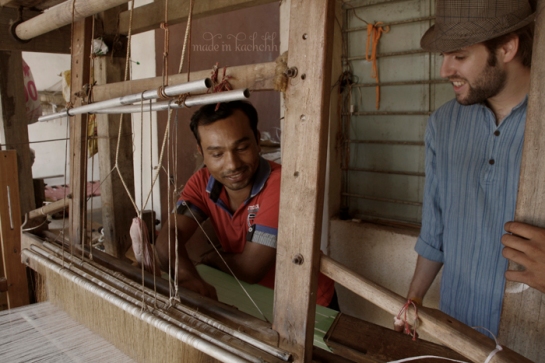 He tells us this moving story of how he once set off to create his “best” piece, he had already given three months of hardwork into it and while it was still on the loom and nearly complete, an insect ate into it. This piece hence will never get sold. But will remain with him to tell his story.
He tells us this moving story of how he once set off to create his “best” piece, he had already given three months of hardwork into it and while it was still on the loom and nearly complete, an insect ate into it. This piece hence will never get sold. But will remain with him to tell his story.
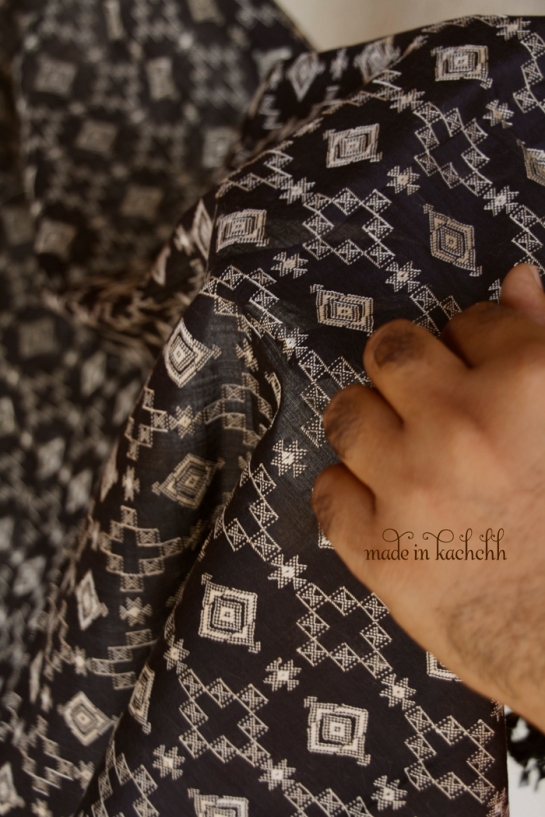 To be able to feel the connection between knowledge and the product is really a unique experience, it gives a new perspective on the value of things.
To be able to feel the connection between knowledge and the product is really a unique experience, it gives a new perspective on the value of things.
“The industrial era” helped us make a bunch of objects accessible in large numbers and at a price much more affordable than products that are “handmade”. This is what allows us to not have to save for two months to buy a pair of trousers, that I personally find quite handy … However, this “progress” has totally engulfed our concept of the “value” of things.
There is little or no information on the conditions under which the products we use are made, by whom, with what, with what impact on the environment and on society more generally. Take the time to take this step to “understand” a product, to look at it differently and go back again to the challenge of eating “less” but “better”.
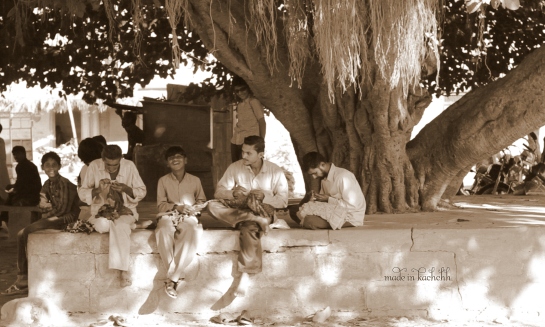
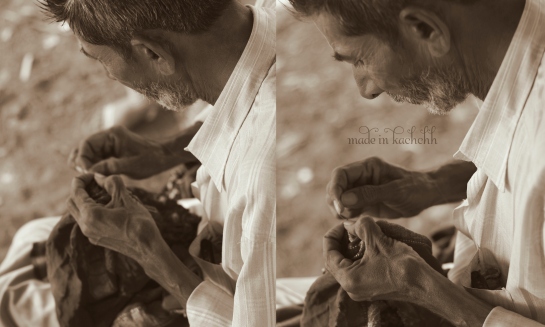 They make very fine knots, nearly about a 100 per square inch! Once the tying is done, the cloth is then dyed in colour to make what is known as “Bandhani” – the most popular art from this region. Tying of cloth is done by women everywhere else in kachchh. So there was something captivating about this scene in Tera.
They make very fine knots, nearly about a 100 per square inch! Once the tying is done, the cloth is then dyed in colour to make what is known as “Bandhani” – the most popular art from this region. Tying of cloth is done by women everywhere else in kachchh. So there was something captivating about this scene in Tera.
